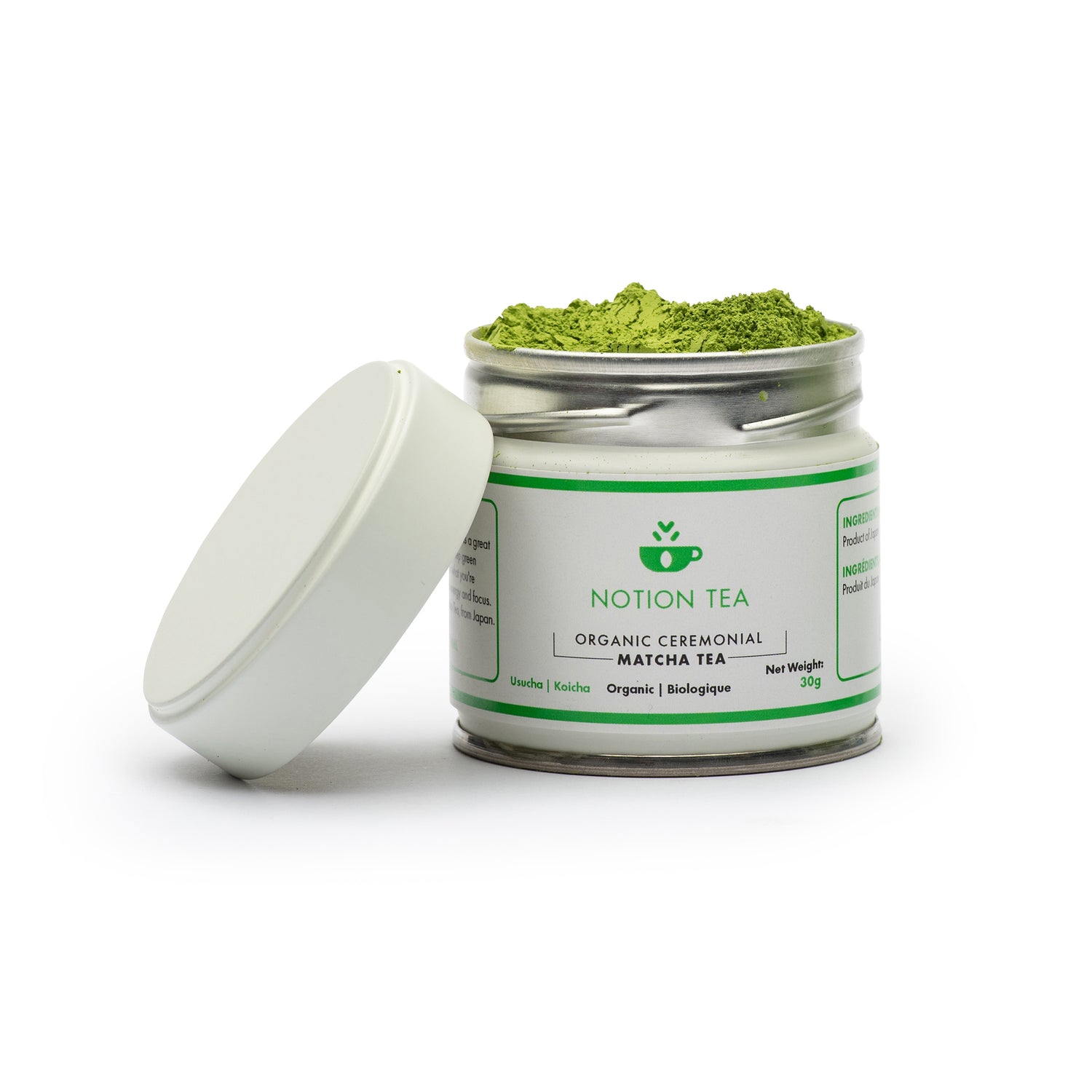Matcha Tea Guide
What is Matcha Tea?
Matcha tea is a tea unlike any other. Matcha is made from high quality tea leaves. The magic begins before the tea leaves are even harvested when the tea trees themselves are covered from direct sunlight for two-to-three weeks before being harvested, causing the leaves to produce more chlorophyll and turn a deeper, darker shade of green.
Once the leaves are harvested, they're dried, deveined, and destemmed. This is to prepare them to be ground. Grinding tea leaves into powder is a slow process. Generating heat during this process will change the aromas of the tea, and is avoided entirely. The desire is to preserve the leaf's natural flavours, so the leaves are slowly stone ground.
What you are drinking, then, is the entire tea leaf.
Where does it come from?
Matcha originated in China, but made its way over to Japan.
Today, the highest quality matcha teas all come from Japan, and that's where Notion Tea Matcha comes from.
What does it taste like?
This depends on many factors, but mainly on the grade of matcha. Matcha mainly comes in three grades: Ceremonial, Premium, and Culinary.
Ceremonial grade matcha is the highest grade and has deep, earthy, complex aromas and is meant to be had on its own, whisked into water.
Premium grade matcha has a somewhat simpler flavour profile, with slightly more astringency. It can be whisked into water and had on its own or be used in lattes and shakes.
Culinary grade matcha is a much simpler, more astringent powder. Its main use, as the name implies, is in cooking. We don't currently carry Culinary grade matcha, though that may change!
How do I drink it?
Excellent question! The answer is: As you please! If you're new to matcha, or would like a more traditional preparation method, please read on.
If you're planning on drinking matcha in the traditional way, you will need to have a bamboo whisk on hand, as well as a bowl.
Ceremonial grade matcha is meant to be had on its own and can be had in one of two ways: koicha or usucha. The difference? The powder-to-water ratio.
Koicha translates to "thick tea", and uses around 4 grams of powder to 0.65 to 1.75 oz (20 to 50 ml) of water.
Usucha translates to "thin tea". Here, you would use around 1-2 grams of matcha powder, along with 2.5 oz (75 ml) of water.
In both cases, you would place the powder in the bowl, add the water, and whisk using a bamboo whisk.
In the case of Koicha, you will end up with thick, syrupy tea.
With Usucha, you're goal is to have a foamy top, so you would whisk in a zig-zag motion, rather than in a circular one. Once the powder is well distributed in the water, you can feel free to add more water to your liking.

Why matcha instead of coffee?
Matcha contains caffeine, but at a smaller dose than coffee. It also contains a substance called L-Theanine. L-Theanine slows the effect of caffeine. This means that instead of an energy spike followed by a crash, as you would have with coffee, you feel energized for longer and with a calming, relaxing effect.
